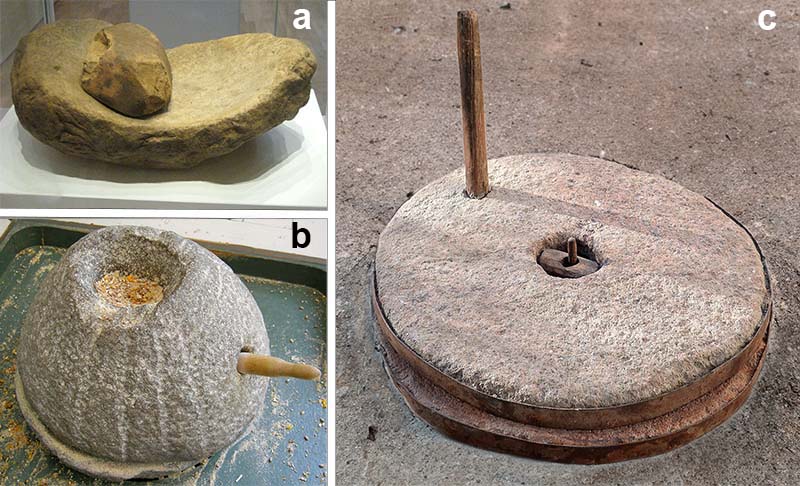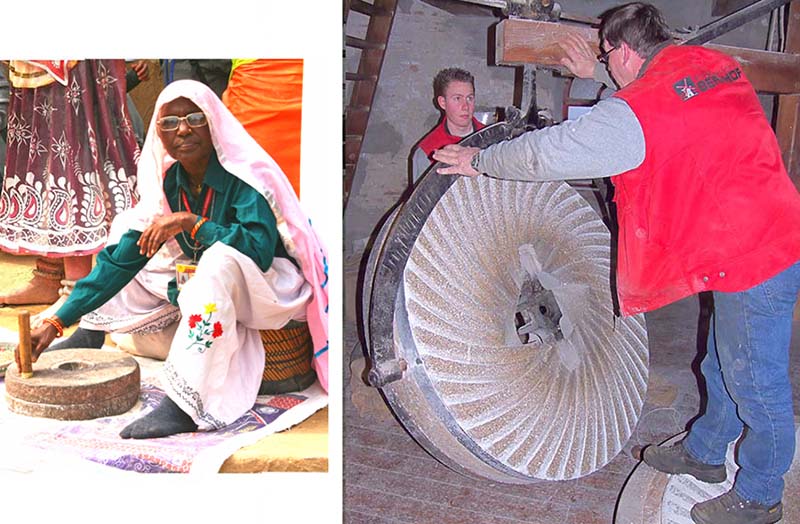
Querns:
Small Hand-Mills for Grinding Flour
Including: Metate, Saddle quern, Trough, Beehive, Rotary
Singleton Mills homepage > Overview of millstones > Querns
Querns: small mills for grinding grain
The history of milling flour goes back for over 10,000 years. The earliest milling stones for grinding flour were small, primitive, hand-powered mills called 'Querns'. A portable piece of stone was cut into a shallow dish shape, and another stone was rubbed over this lower stone, to grind the grain. The lower quern stone was about 30 to 35 cm in diameter.
There were many designs, including 'saddle querns', 'beehive querns', and 'rotary querns'. In some designs, an inserted wooden handle allowed the top stone to be turned back-and-forth, or around in a circle; and grain may be poured into the quern through a central hole in the top:

Above, three different styles of Querns: a, Saddle Quern, 3500 BC; b, an Iron Age Beehive Quern; and c, a recent Rotary Quern. All images from Wikimedia Commons. a, photograph by Claire H.; b, photograph by Linda Spashett Storye Book; c, adapted from image by Davidbena.
As technology advanced, mechanised mills using much larger millstones were developed. In Britain, millstones ranged in size from about 0.8 – 1.6m (2.7 to 5.5 feet) in diameter, and a typical Peak District millstone weighed, when newly cut, about 2.5 tonnes.[1, 2]

Above left, a woman in India holds the handle of a pair of small quern stones used for grinding grain by hand. Above right, a man positions a full-sized millstone in a large-scale flour mill, whilst standing on the second millstone of the pair. Both images are from Wikimedia Commons: left, by Ramesh Lalwani; right, by Rasbak.
The stone types used to manufacture querns were similar to those used to manufacture millstones. These included: basalt, millstone grit, sandstone, puddingstone, granite, and limestone – read more in links, below.
Read More About Millstones
•• Overview •• French Burr Stones •• Basalt-like Cullin Stones •• Millstone Grit •• Old Red Sandstone, Puddingstone, and Lodswoth Stone •• Granite •• Limestone •• Artificial Millstones •• Norfolk Island Millstones •• Colonial Millstones ••